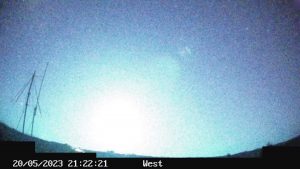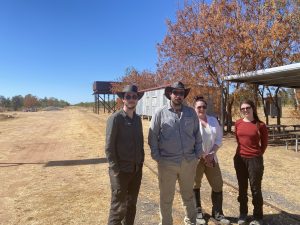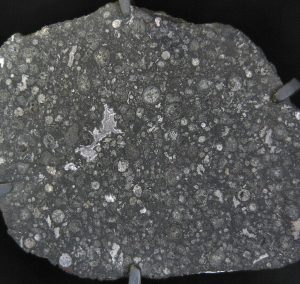It was mid evening on a cool Autumn night in NE Australia and people across the land were out enjoying the evening air at BBQ’s, dinners, events or just chilling out.
Nobody expected the blinding Blue/White flash that was to light up the sky at Aprox 9:22 pm.

I was fortunate enough to have been one of the 1000’s of people to see it, as I was driving home from a family dinner.
The initial blast and aftermath:
From my perspective driving south from the Northern beaches of the Cairns coast, the sky first lit up electric blue as far as the eye could see followed by a blinding white flash.
After we arrived home and a quick Family group discussion later we soon came to the conclusion it was a meteor. Just how big was soon revealed as the social media posts rolled in.
It was all over in 4 to 5 seconds, so too quick to catch on a mobile phone, however it was captured on lots of dash cams, though they never do these events justice. There were a few who happened to be filming at that moment, such as the Astrophotography course being run north of cairns by Steve Cook at that exact moment, as you can see, night turns to day !
However with the security cameras that are now on almost every business, many homes and a dedicated few who constantly film the skies, there was some amazing other amazing footage captured.
It was quickly realised that ground zero, was very close to Croydon in the southern Gulf region.
How do we know this ? Well , the multiple sonic booms, the shaking houses and an explosion described by some as “the loudest sound I have ever heard” in and near Croydon started to paint a picture.
Clear video images were taken from Cairns Airport, Mareeba, Weipa on Cape York, Normanton & Richmond.
Triangulation of these videos indicate the the Meteor entered the Atmosphere from the SE at an angle of Aprox 45Deg.
This all added up to the terminal entry point (where it exploded) to be west of Croydon and east of Normanton.
I now sought detailed reports from witnesses and asked them to submit their reports to the IMO (International Meteor Organisation)
Now most meteors burn up Aprox 60km up in the Atmosphere, clearly this one came in a lot deeper than that given the shockwave that was felt on the ground !
I have been watching meteors and meteor showers for over 30years and this was certainly the biggest I had ever witnessed, just how big was soon to be revealed.
The next piece in the Jigsaw puzzle was the NASA infrasound detection of the atmospheric explosion, which now further narrowed its terminal entry point to near the locality of Blackball, a rail siding on the Famous Croydon to Normanton rail line, often known as the railway from “Nowhere to Nowhere”, though Croydon is certainly now on the Meteorite Map.
So just what did the Satellite readings tell us ? For a start it was bigger than expected at over 3.5metres (the size of a small caravan) It weighted over 80 tons, was travelling at 104,000Km/Hr when it entered the atmosphere and exploded with a force of over 7 Kilotons at 29km above the earth, now that explains a lot of what was seen, felt and heard !
Some of the eyewitness accounts were revealing :“We raced outside when the sky lit up we were outside maybe several minutes then the rumbling started and could feel in through the ground , when looking into the sky afterwards you could see a dust ring and while watching for a while it went from small to huge and had two sort of tails of “dust” off of the ring, was incredible.
“Station Managers close to Blackbull”
By this time I had linked up with the experts in the field of Meteors and Meteorites. Dr Elle Simson and her team at Curtin Uni in WA, who run the Desert Fireball Network. David Finlay from Australian Meteor reports, the IMO & many other experts in the field of meteors.
So why is so much attention being given to this event ? As it turns out this is the biggest atmospheric Meteor explosion in modern Australian recorded history & if it had of occurred over one of our larger cities it could have been a very different news story.
So where to from here ? Well, the desert fireball network (DFN) team have been on the ground searching for the fragments that it would seemed would almost certainly have hit the earth based on modelling of the disintegrating meteor.
On The Ground in Croydon:
After a 6 hour trip west from Cairns we met up with the DFN search team in Croydon at a pre planned Astronomy session that bought us together along with the rest of the community and their accounts of the meteor, then with further discussion on progress of the search over dinner the next evening, I came to realise just how difficult this search is.

Picture: The DFN Search Team at BlackBull: Hely Branch, Seamus Anderson, Dr. Katherine Bermingham & Hope Tornabene.
The latest information on the meteor would seem to indicate that is likely to have been a carbonaceous Chondrite, a very fragile structure that would likely have disintegrated into fragments no bigger that 50g, so finding them is proving tough & as we go to press none have yet been found !
What could it tell us if fragments were found ? With analysis of the positions of the strewn field fragments, analysis of the composition of the fragments , we could be better prepared for the future detection and early warning of collisions, and we always learn a little bit more about the early formation of our solar system, particularly from carbonaceous Chondrites as they are the least numerous of found Meteorites due to their fragile structure compared to an Nickel/Iron or iron rich stony meteorites.

In fact It has been suggested that this could have been a “CI” type chondrite, an even rarer type of Meteorite with only five examples having been recorded with recovered samples totalling little more that 20kg.
“Carbonaceous chondrites or C chondrites are a class of chondriticmeteorites comprising at least 8 known groups and many ungrouped meteorites. They include some of the most primitive known meteorites. The C chondrites represent only a small proportion (4.6%)[1] of meteorite falls.”
The explosion of this particular Meteorite has also been described a “Mini Tunguska” the massive explosion over remote Siberia that flatted 1000’s of square KM of forest in 1918, yet yielded NO fragments on the ground.
There is already a NASA program in place for the detection, orbital analysis and “Flyby” information of 1000’s of already known PHA’s (Potentially Hazardous Asteroids)
Some of these are down to 2m in size, so the question has to be asked. Why did we miss this one & how do we ensure we can see the next one coming ?
“Keep Looking ???? Up ⬆️ “
Ian Maclean
Nightskysecrets
Bio: Ian Maclean is the resident Astronomer in FNQ and owner of Nightskysecrets, The local telescope shop and Astro tour operator.
